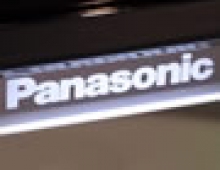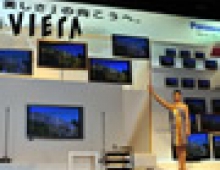
Plasma Panel Shipments Rise Just 3% Sequentially: Report
DisplaySearch released Q2'06 plasma panel unit shipments and revenues by supplier, application, size and resolution as part of its Quarterly PDP Module and TV Shipment and Forecast Report.
After suffering their first sequential decline since they began mass production in Q1'06, plasma panel shipments rose just 3% Q/Q in Q206 to 2.4 million panels. Growth was 8% slower than the plasma panel manufacturers aggregate forecasts. On a Y/Y basis, Q206 shipments were up 73%. Revenues were down 1% Q/Q while rising 52% Y/Y. The slower than expected sequential increase can be attributed to:
- Limited demand growth from the World Cup resulting in a seasonally slow quarter.
- Lack of supply growth, up just 5% Q/Q, with only one new fab expansion ramping which suffered from yield problems.
- Increased demand at larger sizes reducing effective capacity. Accounting for higher demand at larger sizes reduced the weighted Q206 capacity increase to just 4%.
- Limited price reductions. With supply growth limited and demand tight, there was less pressure to reduce prices.
Increased competition from 40 LCD TVs whose prices are falling faster resulting in share loss for plasma TVs. For example, the share of 42-43 plasma TVs in the US 40-44 TV market fell from 55% in January to 51% in June as the price gap with 40-42 LCD TVs narrowed from around $800 in January to under $300 in June.
Only one plasma panel supplier experienced more than 2% growth in Q206 as shown in Table 1. Matsushita earned 32% growth to reclaim the top position with a 31% share, up from 24%. LGE fell from #1 to #2 on a 2% decline while Samsung SDI remained #3 on 2% growth. The top 3 suppliers accounted for an 84% share, up from 79%.
- Limited demand growth from the World Cup resulting in a seasonally slow quarter.
- Lack of supply growth, up just 5% Q/Q, with only one new fab expansion ramping which suffered from yield problems.
- Increased demand at larger sizes reducing effective capacity. Accounting for higher demand at larger sizes reduced the weighted Q206 capacity increase to just 4%.
- Limited price reductions. With supply growth limited and demand tight, there was less pressure to reduce prices.
Increased competition from 40 LCD TVs whose prices are falling faster resulting in share loss for plasma TVs. For example, the share of 42-43 plasma TVs in the US 40-44 TV market fell from 55% in January to 51% in June as the price gap with 40-42 LCD TVs narrowed from around $800 in January to under $300 in June.
Only one plasma panel supplier experienced more than 2% growth in Q206 as shown in Table 1. Matsushita earned 32% growth to reclaim the top position with a 31% share, up from 24%. LGE fell from #1 to #2 on a 2% decline while Samsung SDI remained #3 on 2% growth. The top 3 suppliers accounted for an 84% share, up from 79%.




















